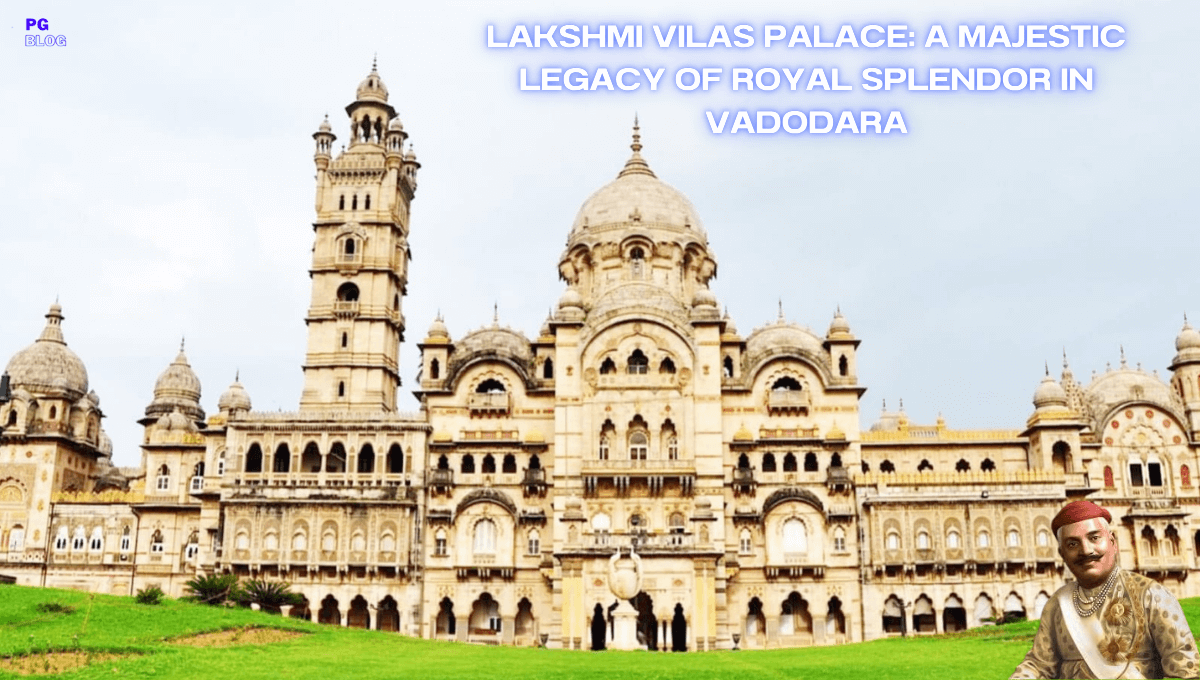Lakshmi Vilas Palace was commissioned in 1878 and completed in 1890 during the reign of Maharaja Sayajirao Gaekwad III, one of the most visionary rulers of the Gaekwad dynasty. The palace was named after his wife, Maharani Lakshmibai, and was built to serve as the official residence of the royal family.
Lakshmi Vilas Palace, located in the cultural heart of Gujarat—Vadodara (formerly Baroda)—stands as a symbol of royal magnificence, architectural brilliance, and timeless heritage. Built in 1890 by Maharaja Sayajirao Gaekwad III, this iconic palace is four times the size of Buckingham Palace and is considered one of the largest private residences in the world. Lakshmi Vilas Palace is a must-visit destination that narrates the glorious past of the Gaekwad dynasty.
In this comprehensive blog, we’ll take you on a journey through the rich history, intricate architecture, fascinating interiors, and cultural significance of this royal marvel. Adorned with Indo-Saracenic architecture, sprawling gardens, ornate interiors, and a rich heritage, the Lakshmi Vilas Palace is a must-visit destination for history buffs, architecture lovers, and cultural explorers.
Sayajirao was not only a patron of art and architecture, but also a reformer who modernized the Baroda state. The construction of Lakshmi Vilas Palace reflects his ambition to create a world-class monument that combined the grandeur of Indian royalty with a touch of European sophistication.
Table of Contents
Introduction to Lakshmi Vilas Palace
Lakshmi Vilas Palace is a living testament to the lavish lifestyle of the Gaekwad dynasty that once ruled Baroda (now Vadodara). Spread over an area of over 700 acres, the palace complex is not just a residence but a royal ecosystem, filled with temples, museums, golf courses and lush gardens.
The palace is still the residence of the Gaekwad royal family, making it one of the few palaces in India where its original lineage is still inhabited.
Historical Background
Lakshmi Vilas Palace was commissioned by Maharaja Sayajirao Gaekwad III, one of the most progressive rulers of India during the British Raj. Gaekwad was known for his visionary rule, educational reforms and patronage of the arts.
The palace was named after Maharani Lakshmibai. She was the wife of Maharaja Sayajirao Gaekwad III. At the time, the construction cost over ₹27 lakh, reflecting the royal ambition to create an architectural marvel of European style with Indian elements.
Architectural splendour
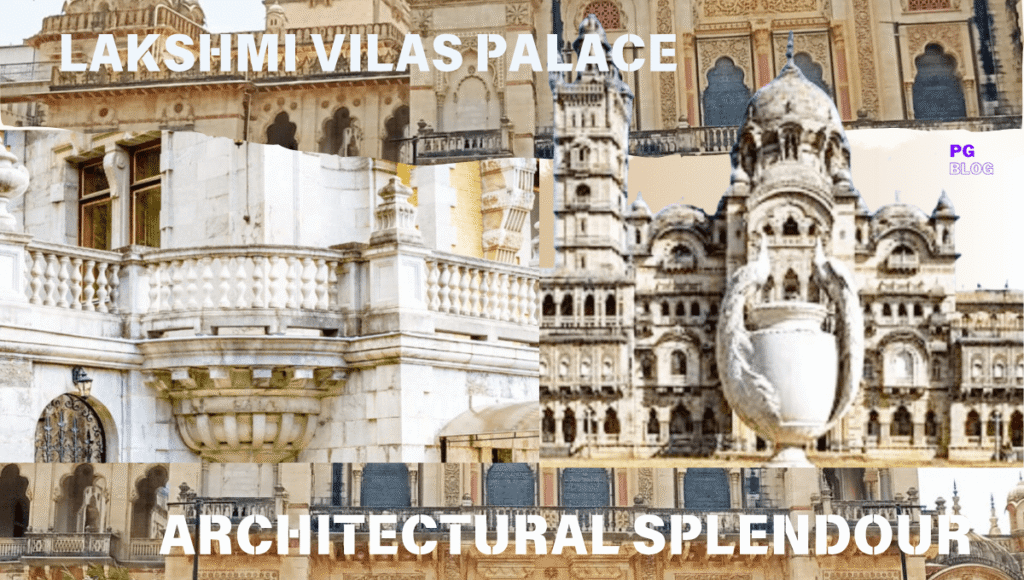
The palace was designed by Major Charles Munt, an English architect, who blended Indo-Saracenic, Hindu, Mughal and Gothic styles into a magnificent structure.
Key architectural highlights:
Grand Durbar Hall: Features Venetian mosaic floors, Belgian stained glass windows and exquisite chandeliers.
European Influence: Gothic arches, domes and marble columns reminiscent of Roman cathedrals.
Intricate Carving: The palace features beautiful Jali work, decorative ceilings and frescoes.
High domes and spires: enhance its visual grandeur and skyline dominance.
The Royal Family and Their Legacy
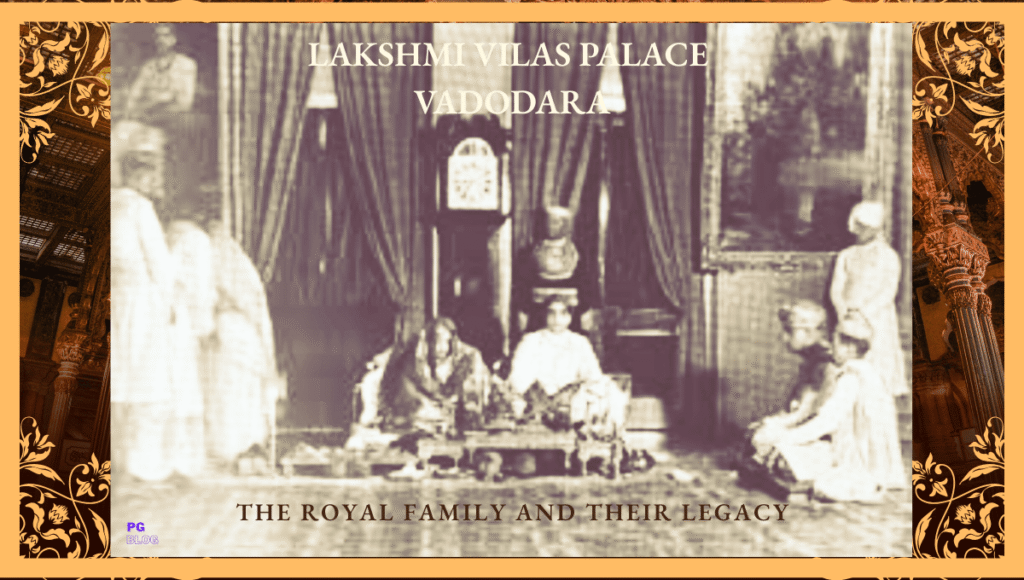
The Gaekwad dynasty ruled Baroda from the 18th century until India’s independence. They were Maratha rulers who rose to prominence under the Peshwas. Under Sayajirao Gaekwad III, Baroda became a hub of education and culture.
Today, Samarjitsinh Gaekwad and his family reside in a portion of the palace, maintaining their regal heritage while managing trusts and cultural events in the city.
Interiors: A Glimpse into Royal Life
The interiors of Lakshmi Vilas Palace reflect the opulence of the time:
Darbar Hall: With its massive chandeliers, Italian mosaic flooring, and golden throne space, this hall was used for royal court proceedings and events.
Banquet Halls: Lavishly decorated with royal portraits, Victorian furniture, and crystal lamps.
Private Chambers: Elegant yet comfortable, featuring period furniture, silk tapestries, and antique artifacts.
Music Rooms: Equipped with European instruments, reflecting the royal family’s love for music.
Museum and Art Collection
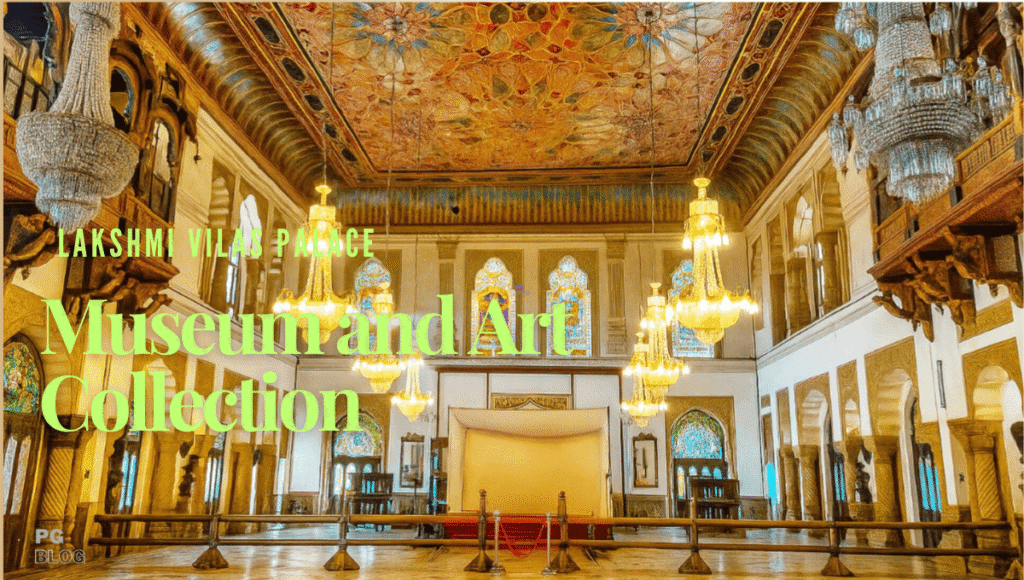
The Lakshmi Vilas Palace Museum, located in the palace compound, is a treasure trove of historical artifacts, paintings, and sculptures. It showcases:
European Paintings and Sculptures: Collected from various parts of the world, showing the royal family’s artistic taste.
The Palace Grounds and Golf Course
The lush palace grounds are meticulously maintained and spread over hundreds of acres. The estate includes:
Lakshmi Vilas Golf Club: A 10-hole golf course developed by the royal family, open to members and tourists.
Gardens and Water Fountains: Inspired by Mughal and European landscaping, these gardens offer serene walkways and picnic spots.
Navlakhi Stepwell: An ancient structure within the grounds that adds to the palace’s historical value.
Cultural Events and Royal Weddings
Lakshmi Vilas Palace is a prime venue for cultural events and royal-style weddings. Its opulent setting and royal aura make it a dream destination for many.
Notable Events:
International music and dance festivals
Royal family celebrations
Film shoots for Bollywood and documentaries
High-profile weddings and receptions
The palace’s lawns and halls can accommodate thousands of guests, making it ideal for luxury weddings in Gujarat.
Architectural brilliance
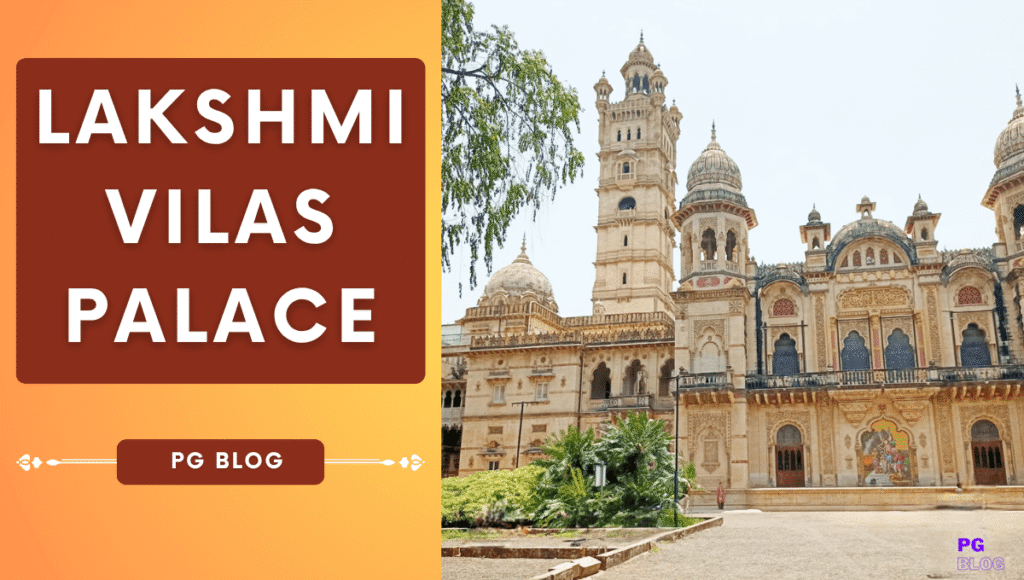
The palace is an architectural marvel that blends Indo-Saracenic, Hindu, Mughal and Gothic styles. British architect Major Charles Munt designed the initial plans, which were later revised and completed by Robert Fellowes Chisholm after Munt’s untimely death.
Key architectural features:
Stained glass windows, Moorish arches and Massive stone domes
Ornate arcades, balconies and turrets
Beautifully carved pillars and vast courtyards
Over 170 rooms, including drawing rooms, banquet halls and private quarters.
The overall design was ahead of its time and included modern amenities such as lifts, which were rare in 19th-century India.
Visiting Lakshmi Vilas Palace (2025 Guide)
Feature Details
🕘 Timings Open 9:30 AM–5:00 PM (closed on Mondays and public holidays)
🎟️ Ticket Prices Palace: ₹250, Museum: ₹150, Combo: ₹375 (includes self-guided audio)
📜 Audio Tours Offer multi-language narration (English, Hindi, French…) across 10 palace zones
👕 Dress Code Temple-style modest attire recommended; wear comfortable shoes for expansive grounds
🧭 Nearby Sites Just 3 km from Sayaji Baug (Kamati Baug), Baroda Museum, EME Temple, etc.
🛍️ Facilities On-site café, banquets, souvenir shop, parking
🌤️ Best Time October–March, for mild weather and clearer skies
🎯 Pro Tips
- Arrive early to breeze through queues and enjoy cooler-than-normal mornings.
- Allocate at least 2–4 hours to explore palace, museum, gardens, and galleries.
- Use audio guides for rich historical context.
- Visit on weekdays to avoid crowds.
How to Reach Lakshmi Vilas Palace
Lakshmi Vilas Palace is well connected to major cities via road, rail, and air.
By Air:
Vadodara Airport (BDQ) is about 7 km away and connects to cities like Mumbai, Delhi, and Bangalore.
By Train:
Vadodara Junction is a major railway station, well connected to the rest of India.
By Road:
Vadodara is connected via NH48, Delhi-Mumbai Expressway and is a 2-hour drive from Ahmedabad.
Local transport like autos, taxis, and buses are easily available to reach the palace.

